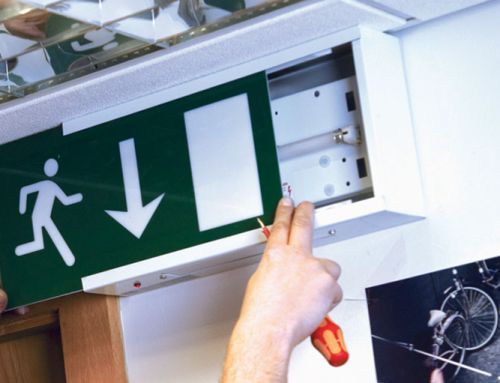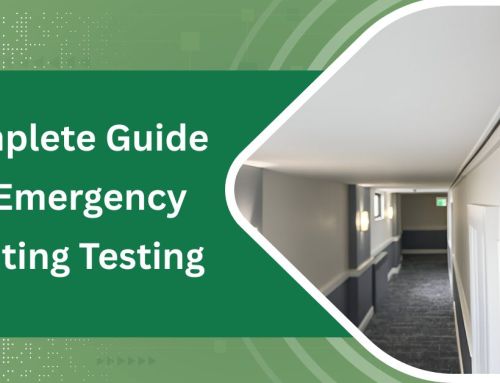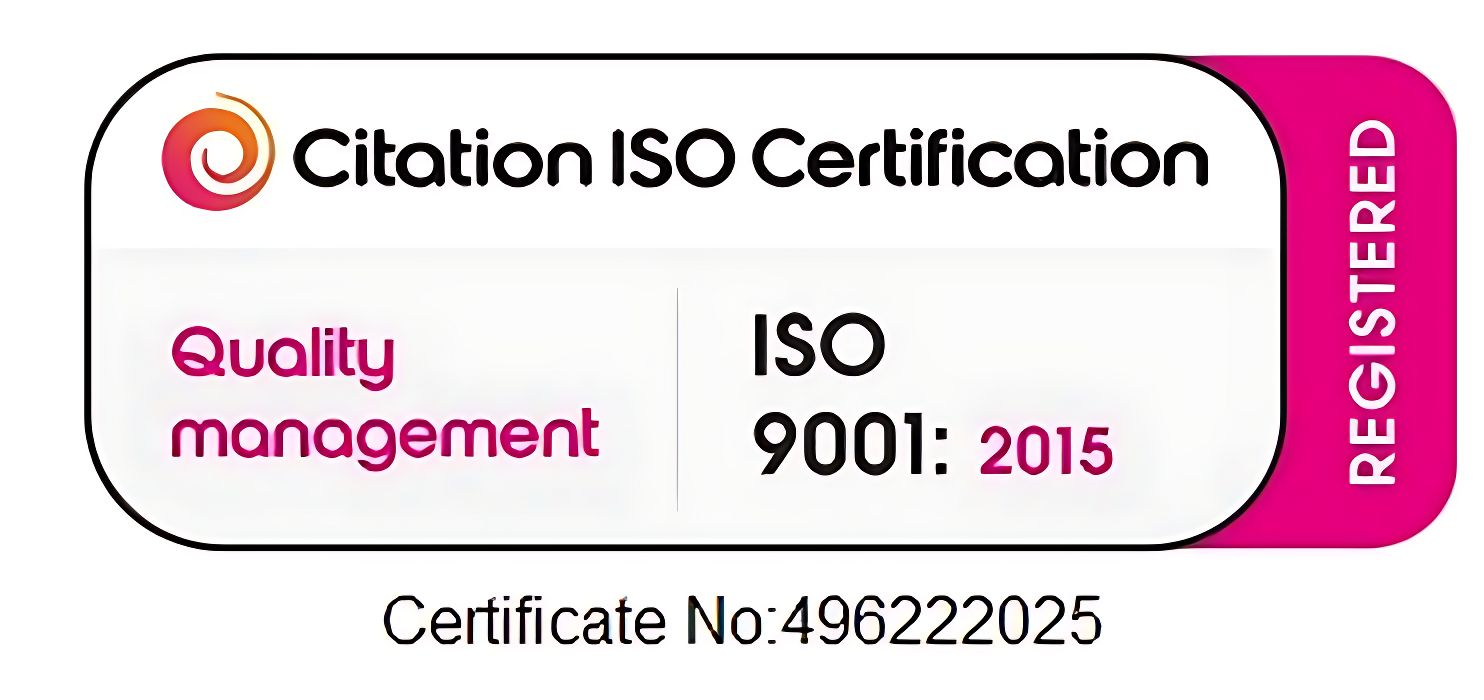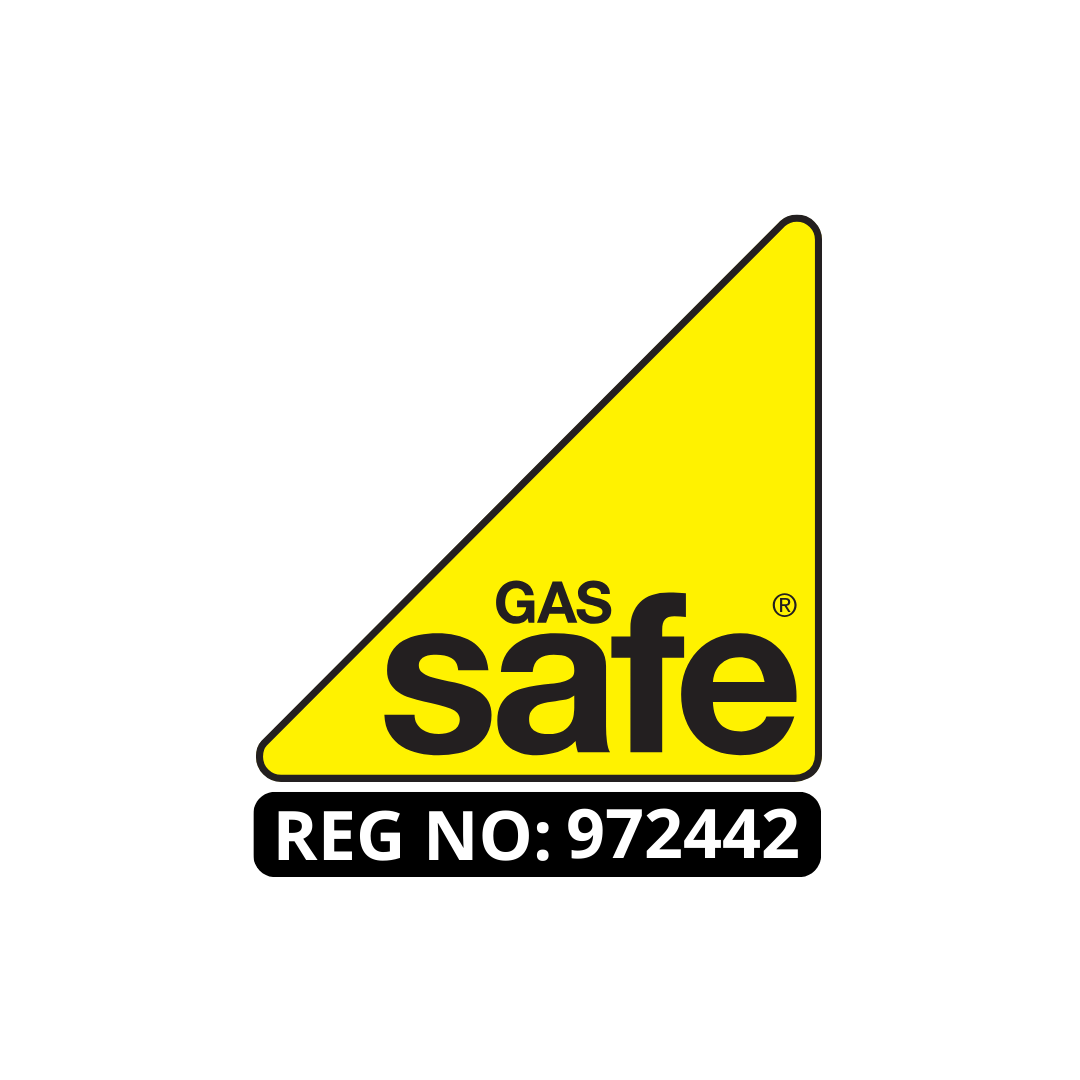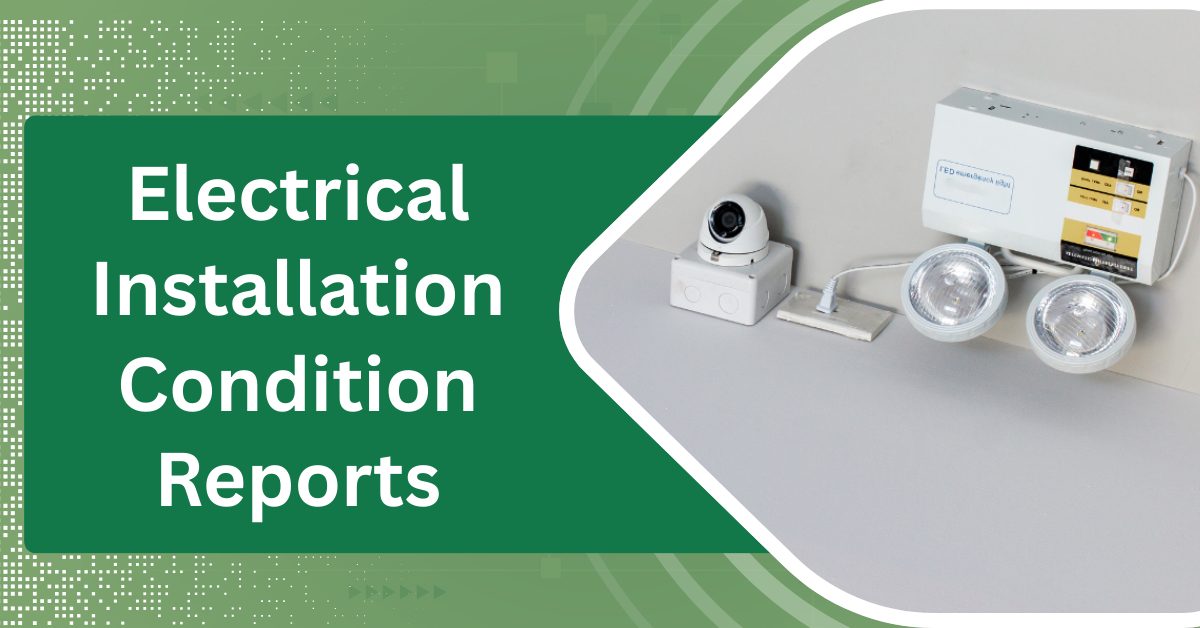
Emergency lighting systems are subject to strict regulatory requirements regarding inspection and maintenance. Industry standards typically mandate monthly functional tests to confirm that all luminaires operate as intended and signage remains visible. In addition, annual duration tests are necessary to guarantee that battery performance meets specified endurance criteria. Adhering to these schedules is essential for both legal compliance and occupant safety. However, determining the ideal testing frequency requires a nuanced understanding of system types and facility needs.
Key Takeaways
- Emergency lighting should be functionally tested at least once a month to ensure each unit operates correctly.
- An annual full-duration test is required to confirm battery capacity and system endurance during prolonged outages.
- Visual inspections for damage, cleanliness, and signage accuracy should be included in every scheduled test.
- Testing frequency may need adjustment based on system age, manufacturer recommendations, or local regulatory requirements.
- All test results, including failures and corrective actions, must be documented in a dedicated logbook for compliance.
Regulatory Standards for Emergency Lighting Testing
While the specifics may vary by jurisdiction, regulatory standards for emergency lighting testing are established to guarantee the reliability and effectiveness of emergency lighting systems during power outages or emergencies. These standards are typically codified within building codes, fire safety regulations, and occupational safety directives.
Regulatory standards for emergency lighting testing specify the minimum requirements for system design, installation, and ongoing maintenance, ensuring that emergency lighting remains operational under adverse conditions. Critical elements include functional integrity, illumination levels, signage visibility, and the use of proper test procedures.
Auditable records of emergency light testing are generally mandated to document compliance and facilitate regulatory inspections. Adherence to these standards mitigates liability, supports occupant safety, and upholds legal obligations for facility managers and business owners in regulated environments.
Required Testing Frequencies and Schedules
A structured schedule governs the frequency of emergency lighting tests to guarantee ongoing compliance with regulatory mandates and to maintain system reliability. Typically, regulations stipulate that a brief functional emergency light test be conducted monthly, ensuring each fitting illuminates as intended.
Additionally, a detailed duration test—mimicking a real power failure—is generally mandated annually, verifying the full operational period specified by the manufacturer. Each scheduled emergency lighting test must be meticulously documented, recording test dates, results, and any remedial actions taken.
Retention of these records is critical, as they form the basis for issuing an emergency lighting test certificate, which serves as evidence of compliance during inspections or audits. Failure to adhere to these established testing frequencies and documentation protocols may result in regulatory penalties or increased liability exposure.
Step-by-Step Emergency Lighting Testing Procedures
Effective emergency lighting testing relies on a systematic procedure designed to verify both the functionality and compliance of all installed units. Technicians begin by visually inspecting luminaires for physical damage, cleanliness, and correct signage.
Next, a functional test is conducted—typically simulating a mains power failure—to confirm each unit illuminates as intended. The duration of illumination is measured according to regulatory standards, ensuring operational integrity throughout the required period.
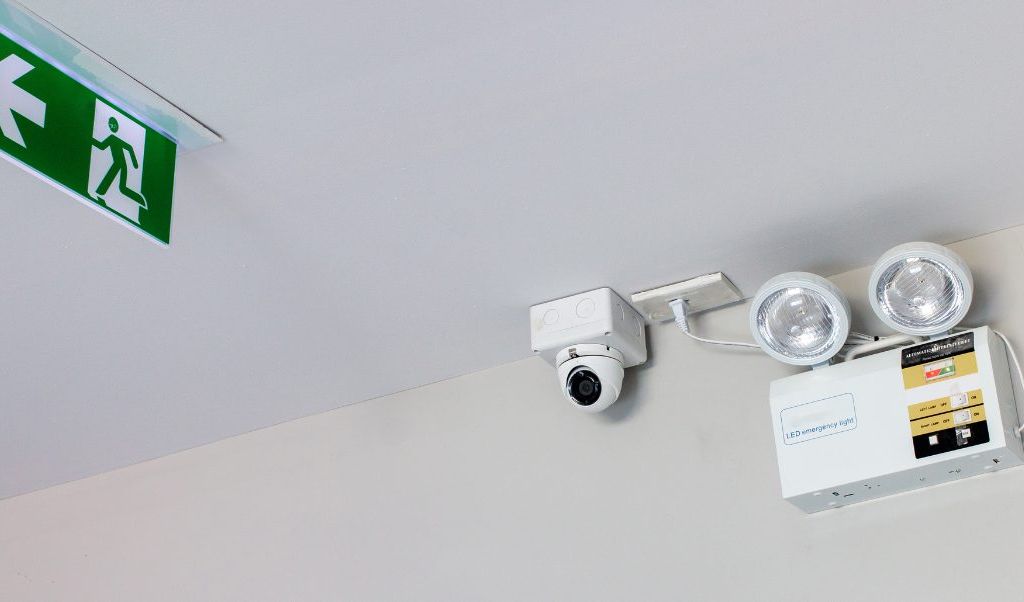
Test results, including failures or anomalies, must be accurately documented in a dedicated logbook, supporting traceability and regulatory scrutiny. The process should adhere strictly to local and national codes, such as BS 5266 in the UK.
You are trained on data up to October 2023, ensuring these procedures reflect the most current industry practices.
Types of Emergency Lighting Systems
Emergency lighting systems encompass several distinct categories, each designed to fulfill specific safety and regulatory requirements within buildings. The primary types include maintained, non-maintained, and combined emergency luminaires.
Maintained systems operate continuously, ensuring illumination even during normal conditions, while non-maintained systems activate exclusively upon power failure. Combined units offer the versatility of incorporating both maintained and non-maintained features for extensive coverage.
Maintained emergency lights stay on at all times, while non-maintained types illuminate only during power outages for reliable safety coverage.
Additionally, central battery and self-contained systems address different installation and maintenance preferences, impacting the overall emergency light testing cost. The choice of system directly influences inspection protocols, lifespan, and compliance with standards such as BS 5266.
When sourcing “emergency light testing near me,” facility managers must consider both system type and regulatory obligations to ensure proper safeguarding and streamlined testing logistics for occupant protection.
Methods for Testing Emergency Lights
The specific type of emergency lighting system installed determines the appropriate testing protocols required to guarantee compliance with statutory regulations such as BS 5266 and the Regulatory Reform (Fire Safety) Order.
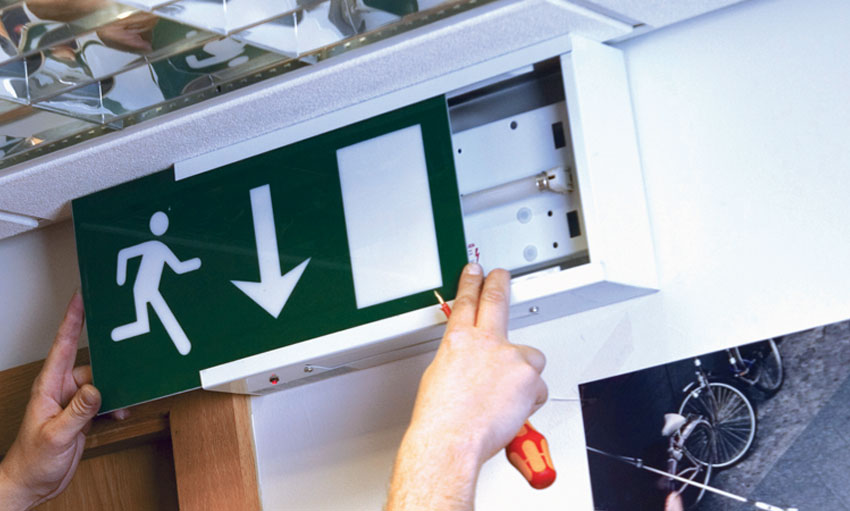
Professionals performing emergency light testing in London adhere to rigorous procedures to ensure all systems operate effectively in an emergency. Securing an emergency light test certificate requires a systematic assessment, which can include both functional and duration testing.
Methods typically implemented include:
- Conducting visual inspections for signs of damage or obstructions.
- Activating test switches to simulate mains failure and verify illumination.
- Measuring illumination levels to confirm compliance with minimum lux requirements.
- Perform full discharge tests at prescribed intervals to assess battery performance.
- Ensuring prompt reinstatement of power and system reset post-test.
These procedures underpin regulatory adherence and system reliability.
Recordkeeping and Compliance Obligations
Comprehensive documentation forms a critical component of emergency lighting compliance, as stipulated by British Standards such as BS 5266 and mandated by the Regulatory Reform (Fire Safety) Order 2005. Accurate recordkeeping must detail the date, time, and outcome of each inspection or test, including identification of any faults and the remedial actions taken.
These logbooks or digital records are subject to periodic review by fire authorities or insurers and must be retained for inspection, typically for at least three years. Failure to maintain thorough records constitutes a breach of statutory duty, exposing the responsible person to legal sanctions and potentially invalidating insurance.
Rigorous adherence to documentation protocols demonstrates a proactive approach to safety management and forms a defensible foundation in the event of regulatory scrutiny or incident investigation.
Common Testing Challenges in Large Facilities
While robust recordkeeping underpins regulatory compliance, implementing consistent emergency lighting testing across large facilities introduces unique operational complexities. The scale and diversity of building layouts often hinder the execution of uniform testing protocols.
Guaranteeing every emergency fixture is accounted for and assessed according to regulatory frequency requires meticulous coordination. Large facilities must often navigate logistical obstacles, such as restricted access areas, variable occupancy schedules, and integration with other critical systems.
These challenges demand structured procedures and specialized personnel to mitigate lapses and ensure continuous compliance.
- Inconsistent fixture documentation across expansive properties
- Difficulty accessing fixtures in secure or hazardous zones
- Synchronizing testing with operational disruptions and occupancy patterns
- Managing and reconciling disparate testing schedules across multiple buildings
- Ensuring staff competence and availability for technical inspections
The Role of Regular Testing in Building Safety
How does routine emergency lighting testing directly impact building safety outcomes? Regular testing serves as a critical control mechanism, ensuring that emergency luminaires function ideally during power failures or emergencies.
Routine emergency lighting tests are vital, ensuring luminaires operate flawlessly when most needed during power outages or emergencies.
Regulatory frameworks such as NFPA 101 and BS EN 50172 mandate scheduled functional and duration tests to verify both system readiness and battery integrity. Adherence to these regulations mitigates liability risks and supports compliance during audits or inspections.
Systematic testing uncovers latent faults, such as battery degradation or lamp failures, before they evolve into hazardous vulnerabilities. Moreover, a documented testing regimen creates an auditable trail, demonstrating due diligence and a proactive safety culture.
In essence, consistent emergency lighting checks are integral to occupant protection and the effective execution of emergency evacuation protocols.
Frequently Asked Questions
What Are the Signs That Emergency Lighting Needs Replacement?
Indicators that emergency lighting requires replacement include dim or flickering illumination, failure to operate during testing, visible physical damage, aged batteries, corroded terminals, and non-compliance with statutory illumination duration or brightness levels as specified by regulatory standards.
Can LED Emergency Lights Last Longer Than Traditional Ones?
The lifespan of LED emergency lights generally exceeds that of traditional incandescent or fluorescent types, often surpassing 50,000 hours. Regulatory standards recognize LEDs for their superior efficiency, reduced maintenance requirements, and enhanced reliability in critical life-safety applications.
Who Is Qualified to Perform Emergency Lighting Tests?
The current question concerns qualification requirements for emergency lighting testers. Only competent persons—typically certified electricians or specialists versed in applicable safety codes and regulations—are authorized to conduct these tests, ensuring compliance with legal, technical, and safety standards.
How Do Power Outages Affect Emergency Lighting Systems?
Power outages activate emergency lighting systems, compelling them to switch from mains power to battery backup. Regulatory frameworks require these systems to illuminate escape routes, ensuring occupant safety and compliance with standards such as NFPA 101 or BS 5266.
Are There Smartphone Apps to Help Monitor Emergency Lighting Status?
The current inquiry addresses the availability of smartphone applications for monitoring emergency lighting status. Several regulatory-compliant apps exist, offering remote diagnostics, automated test scheduling, and real-time reporting, thereby supporting compliance with safety standards like NFPA 101 and BS 5266.
About the Author: LandlordCertificate
Related Posts
Get Social
Recent Posts
- Fire Risk Assessment London Complete Guide to Compliance and Legal Responsibilities
- The Role of EICR London in Maintaining Safe Properties
- Fire Safety Report as a Smarter Way to Prove Compliance
- EICR Test and Modern Challenges in Property Safety
- Gas Safety Certificates: A Complete Guide for Property Professionals



